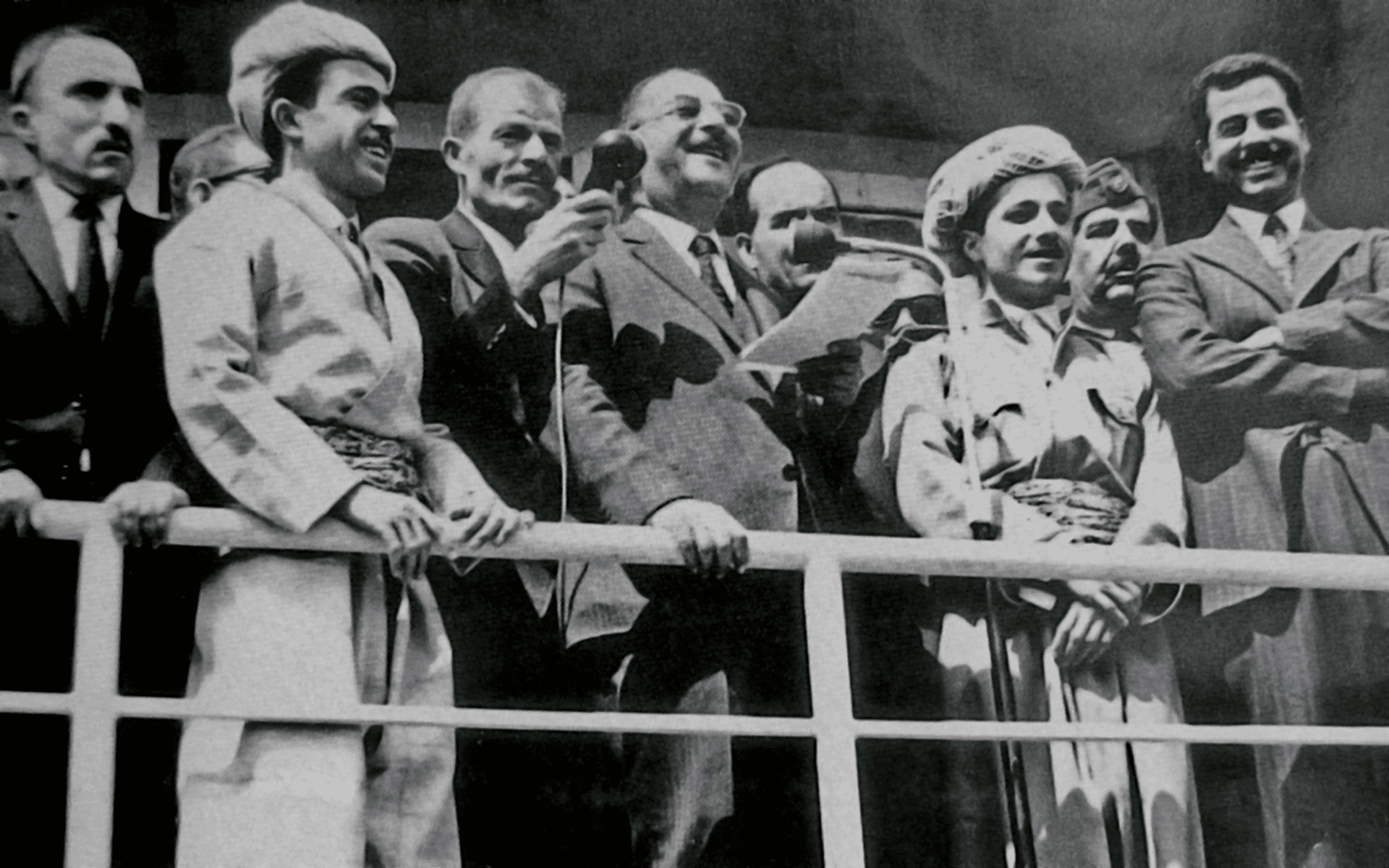Lead image: SADDAM HUSSEIN, pictured far right, joins IDRIS and MASOUD BARZANI, both pictured in traditional Kurdish dress, to celebrate the March agreement between Iraq and the Kurdistan Democratic Party (KDP). The agreement explicitly recognised the legitimacy of the Kurdish national cause, yet its terms were soon reneged upon by the Iraqi government.
The signed statement concluded, “History will bear witness that you Kurds did not have and will never have as sincere a brother and as dependable an ally as the Arab people”
After Saddam returned to Baghdad, the KDP and the Iraqi government signed an accord which granted the Kurds autonomy within Iraq.
The parties agreed that Kurdish would be recognised as an official language and that this autonomous region would consist of three Kurdish governorates with a Kurdish majority.
A 15 point plan was agreed by Saddam Hussein and Mullah Mustafa Barzani, with the signed statement concluding, “History will bear witness that you [Kurds] did not have and will never have as sincere a brother and as dependable an ally as the Arab people.”
‘I knew [it was a ruse] even before I signed the agreement,’ Barzani would later recall. ‘But our people asked me, “How can you turn down self-rule for the Kurdish people?”’
However, Kirkuk remained a disputed territory that continued to fall outside the purview of the 11 March agreement, which reserved judgement on the territorial extent of the Kurdish autonomous region pending a new census. As a stalling manoeuvre, the Iraqi government agreed that the region’s final boundaries were to depend on whether the census showed that a proven majority of Kurds resided in the disputed areas.
Yet the proposed census never happened, and even before the 11 March agreement was publicly announced the Ba’athists redrew Kirkuk’s boundaries with the ambition of reducing the Kurdish population in Kirkuk’s ‘official’ territory. Villages and towns within the borders they mark were annexed to Erbil or Sulaimanyia and vice versa, and in some cases settlements located within Diyala and Saladin’s boundaries were added to the Kirkuk region.
“I knew [it was a ruse] even before I signed the agreement,” Mustafa Barzani would later recall. “But our people asked me, ‘How can you turn down self-rule for the Kurdish people?'”
